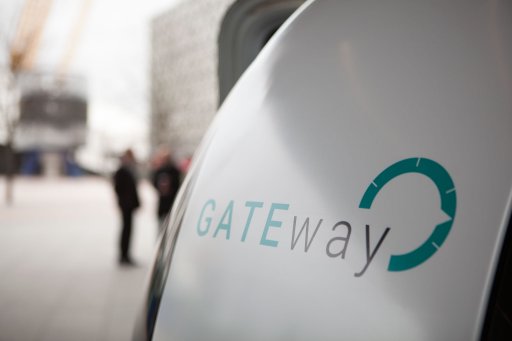|
|
October 2015 – March 2017 Funded by industry and Innovate UK The GATEway project, an £8 million project funded by Innovate UK and Industry, is a technology driven project that aims to demonstrate the safe and efficient integration of sophisticated automated transport systems into complex real world smart city environments. The project is led by TRL and is based in the Royal Borough of Greenwich in London. As part of the GATEway project we are seeking volunteers to take part in a survey designed to collect information from the general public concerning their perception of autonomous vehicles, which are ‘driverless cars’ controlled automatically by onboard computer. Your participation in this study will contribute to improving our understanding of how people may interact with autonomous vehicles. Click this link to go straight to the survey. |
|||||||||||||||||||||||||
| Project Objectives |
Recent years have seen the rapid development of autonomous vehicle technology given the huge potential benefits in safety, efficiency and effectiveness of surface transport. The change brought by the technology in vehicle types, journey patterns, parking requirements and driver behaviour etc. will have far reaching economic, social and environmental impacts. The change also raises a number of issues facing vehicle manufacturers, regulators and those wishing to exploit the technology. The main issues include a lack of both clarity over the legality and regulations governing automated transport and of knowledge as to how such vehicles will impact upon the transport system, other road users, society, business enterprise and the environment.
The GATEway project will address these issues to deliver demonstrator automated transport technologies so that implementation, legislation, driver/passenger experiences, transport systems, commercial activities, social/health/crime implications and skills/knowledge growth can all be explored. The project provides an opportunity to examine critical risks, legalities and insurance matters and the impact of automated transport on smart cities, with specific relevance to how Greenwich and London may improve transport and attract high value businesses and services, but also export of these capabilities to both established and emerging smart cities. The GATEway project seeks to establish Greenwich as a leading venue for the testing and development of automated transport systems, showcasing their effectiveness for implementation in London, the UK and beyond and enhancing the global competitiveness of UK businesses. The project focus is understanding engagement and interaction with automated vehicles, their local, national and international implications, effectively disseminating the results and providing routes to exploitation. The project legacy will be a permanent driverless vehicle test environment in Greenwich, generating tangible business outcomes for consortium partners and attracting international OEMs and associated industries to the UK. The GATEway project consists of six workpackges:
Within the GATEway project, the UoG is represented by FSEG. A significant part of the GATEway project is the running of three sets of zero emission autonomous vehicle trials:
|
|||||||||||||||||||||||||
| FSEG’s Role in GATEway |
The nature of the physical interaction of pedestrians with autonomous vehicles in a shared space environment is currently unknown. There are many unanswered questions involved in this interaction, including but not limited to:
The main interest for FSEG is to examine pedestrian interaction with the autonomous vehicles. FSEG is primarily involved in WP5 and will be involved in:
|
|||||||||||||||||||||||||
Project Partners |
|
|||||||||||||||||||||||||
| Further Information | Prof. Ed Galea Fire Safety Engineering Group University of Greenwich Greenwich Maritime Campus Old Royal Naval College Queen Mary Building Greenwich SE10 9LS UK Tel: +44 (020) 8331 8730 |
|||||||||||||||||||||||||
| Consortium web page | http://www.GATEway-project.org.uk |
|||||||||||||||||||||||||















